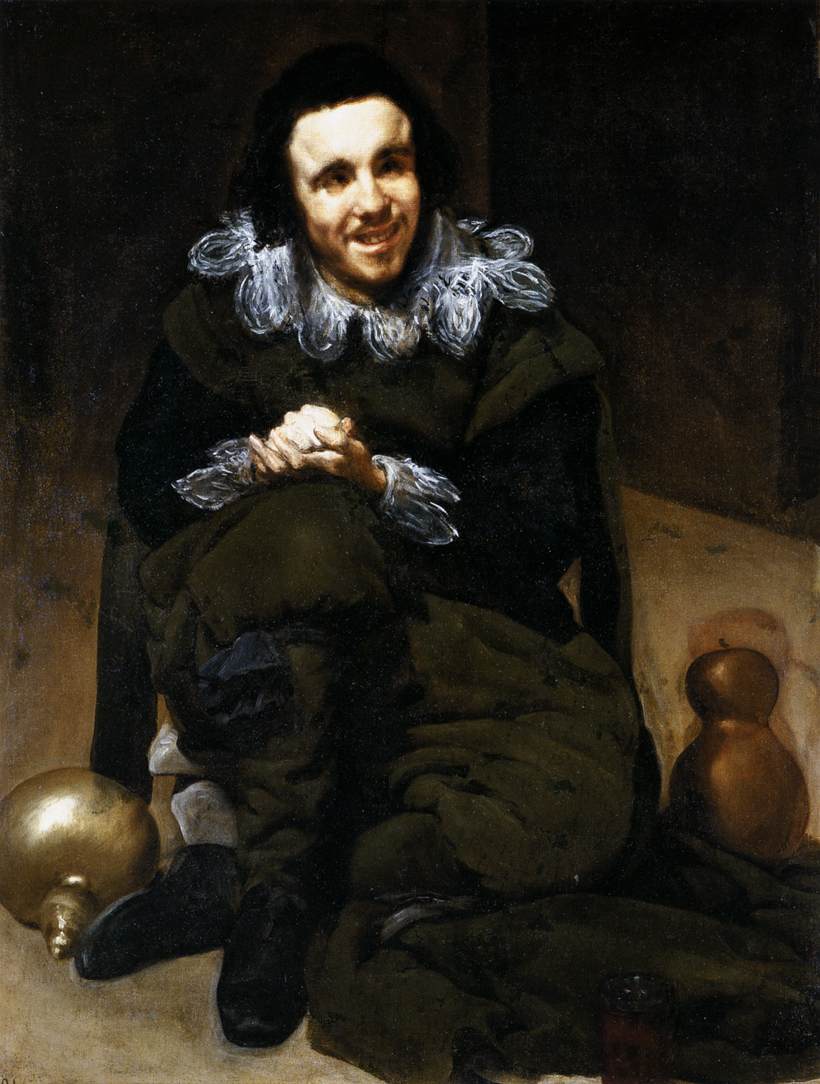Description
The painting "El enano Don Juan Calabazas, called Calabacillas" by renowned artist Diego Rodríguez de Silva y Velázquez, is a work that captivates with its unique artistic style and masterful composition. With an original size of 106 x 83 cm, this painting transports us to 17th century Spain, where Velázquez stood out as one of the great masters of Baroque art.
Regarding the artistic style, Velázquez employs a masterful technique in the handling of light and color, creating a realistic and detailed atmosphere. The use of loose and precise brushstrokes allows us to appreciate every texture and detail of the dwarf's figure, highlighting his personality and character. The artist manages to capture the essence of the character, showing his dignity and humanity despite his physical condition.
The composition of the painting is another highlight. Velázquez places the dwarf at the center of the work, surrounded by objects that evoke his status and position at court. The dwarf holds a pumpkin, symbol of his nickname, while around him are other objects such as a jug of wine and a hat, which reinforce his identity and role in the society of the time. The arrangement of these elements creates a visual harmony and balance in the composition.
As for colour, Velázquez used a warm and earthy palette, with brown and ocher tones predominating. These colors contribute to the feeling of realism and depth in the painting, as well as to the creation of an intimate and welcoming atmosphere. In addition, the artist uses subtle contrasts of light and shadow to highlight the volumes and details of the dwarf's figure.
The history of painting is fascinating. Don Juan Calabazas, known as Calabacillas, was a Spanish court dwarf during the reign of Philip IV. Velázquez, who was the official court painter, portrayed Calabacillas on several occasions, showing his ability to capture the personality and humanity of his subjects. This particular painting is considered one of the highlights of the series, due to its artistic quality and the expressiveness of the portrayed dwarf.
Although not many little-known aspects of this specific painting are known, it is known that Velázquez had a particular interest in portraying people with physical deformities, such as dwarfs and court jesters. This approach reflects his fascination with human diversity and his ability to create portraits that go beyond the superficial, showing the true essence of his subjects.
In conclusion, "The dwarf Don Juan Calabazas, called Calabacillas" is a painting that stands out for its artistic style, composition, color, and the history that surrounds it. Velázquez manages to capture the essence of the dwarf, showing his dignity and humanity through his masterful technique and his ability to create realistic and emotional portraits. This work is a testament to the talent and genius of one of the great masters of Baroque art.

